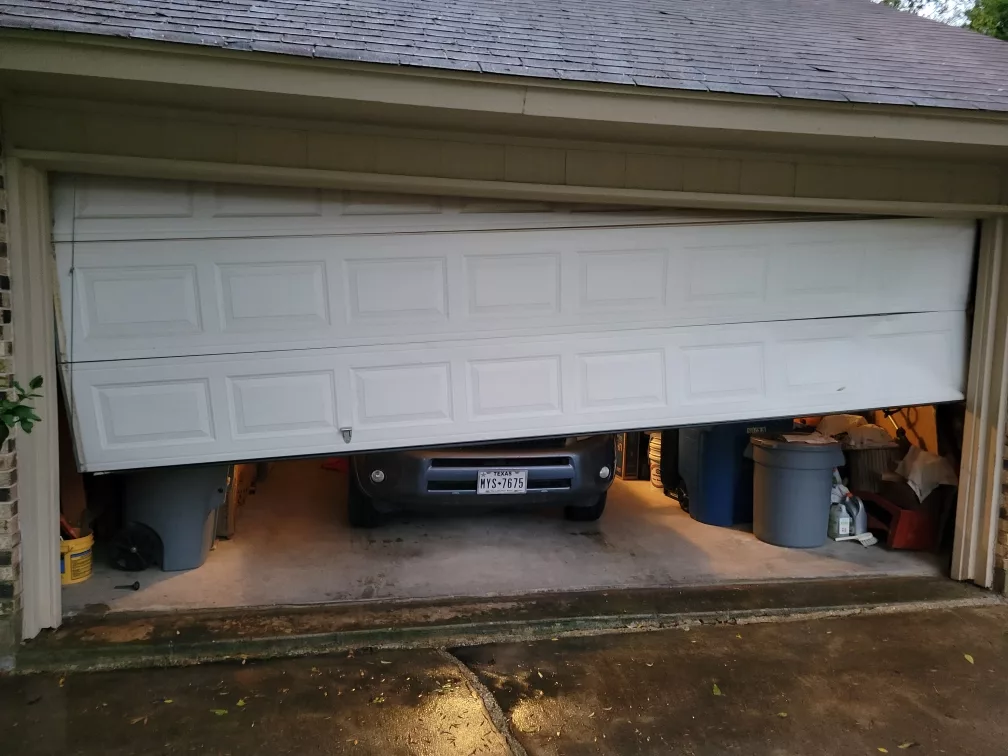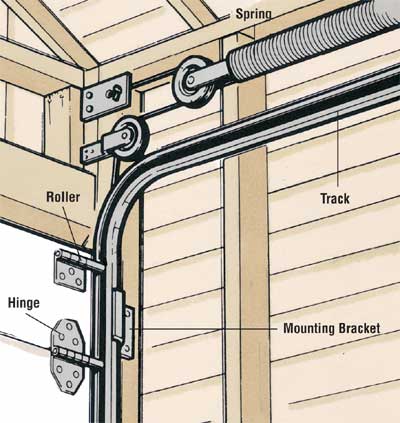Usual Garage Door Issues and Exactly How to Fix Them
Garage doors are important for both safety and security and convenience, yet they commonly present a variety of common concerns that can annoy house owners. Issues such as too much sound throughout operation, doors that fall short to open or close, misaligned tracks, and malfunctioning remotes can develop without caution. While some concerns might appear simple to solve, others may need a more nuanced understanding of garage door mechanics. Attending to these troubles properly not just improves capability however likewise lengthens the life of the door. One might question what steps are necessary to take on these difficulties successfully.
Noisy Garage Door Procedure
A loud garage door procedure can be a considerable resource of aggravation for home owners, often suggesting underlying mechanical concerns. Such interruptions may stem from numerous reasons, including damaged rollers, loosened equipment, or insufficient lubrication. Identifying the source of the noise is essential for efficient resolution.
One common root cause of extreme noise is the existence of corroded or worn-out rollers. Over time, these parts can deteriorate, bring about grinding or squealing audios as the door steps. Normal assessment and replacement of these rollers can significantly lower noise levels. In addition, loose bolts or screws in the door device can produce rattling audios throughout operation. Tightening these fasteners guarantees an extra stable and quieter activity.
An additional adding factor is insufficient lubrication of the door's moving components. Applying a premium lubricant to the tracks, springs, and rollers can greatly reduce friction and noise. House owners should do this maintenance regularly to maintain optimum efficiency.
Lastly, the garage door opener may likewise produce noise because of its age or mechanical concerns. If the sound persists in spite of addressing various other variables, speaking with a professional for a comprehensive inspection and potential repair work may be essential.
Door Won't Open Up or Close
Experiencing a garage door that won't open or shut can be incredibly irritating and frequently indicates a malfunction within the system. Several factors can contribute to this concern, and recognizing the root cause is vital for effective resolution.

Following, examine the safety sensing units located at the base of the door. These sensors can become misaligned or blocked by debris, preventing the door from running properly. Clean the sensors with a soft fabric and ensure they are aligned.
In addition, the garage door's internal components should be assessed. Problems such as a busted springtime, damaged rollers, or a damaged opener can restrain activity. If any type of components appear to be harmed, it might be advisable to get in touch with a specialist for repairs.
Misaligned Tracks
(Trusted Support)Misaligned tracks can severely interfere with the smooth procedure of a garage door, resulting in functional failings such as uneven movement or full immobilization. This concern usually occurs because of a range of variables, including wear and tear, accidental influences, or incorrect installation. When the tracks are misaligned, the rollers can not relocate easily, which not only strains the electric motor yet additionally poses security risks.
To identify misalignment, visually check the tracks for gaps or uneven spacing. If you observe any inconsistencies, it is important to attend to the issue immediately - garage door service. Begin by loosening the screws that secure the track to the wall, permitting for adjustments. Carefully touch the track back into its proper position making use of a rubber mallet or a comparable device, ensuring it is straight and degree.
When the alignment is remedied, retighten the screws to protect the track. For a more long-term option, think about enhancing the tracks with added braces. Normal maintenance, including cleaning up the tracks and making certain rollers remain in excellent problem, can protect against future imbalances. By addressing misaligned tracks immediately, you can recover the functionality of your garage door and enhance its longevity.
Broken Springs
Among the numerous elements of a garage door system, damaged springtimes are just one of one of the Recommended Site most usual issues that can substantially impede its capability. Garage door springtimes are important for balancing the weight of the door, enabling smooth opening and closing. When a spring breaks, it can result in a door that is difficult to run or, in some situations, entirely unusable.
There are two primary types of springtimes: torsion springtimes, which are mounted above the door, and expansion springtimes, discovered on either side. Indicators of a broken spring include a door that will not open up, a visible gap in the springtime, or a loud sound throughout operation. Trying to operate a garage door with a broken springtime can cause more damage to the door or the opener.
Fixing busted springs is not a DIY project; it needs specialized devices and experience as a result of the high stress included. It is advisable to seek advice from a specialist technician who can safely replace the springtimes and guarantee the door is correctly stabilized. Normal maintenance and inspections can help protect against spring failings and prolong the life expectancy of the garage door system.
Push-button Control Issues

The very first step is to examine the batteries in the remote. Replace them if they are weak or dead. If the remote still fails to run, evaluate the garage door opener to make sure that its sensors are clean and unhampered. Dirt, debris, or imbalance may hinder the signal transmission in between the remote and the opener.
Interference from various other electronic tools can also hamper remote performance. Ensure that neighboring devices, such as cordless routers or cordless phones, are not creating disturbances. garage door service. If disturbance is believed, try relocating these devices better away from the garage door opener
In many cases, the remote may require to be reprogrammed. Speak with the maker's guidelines to reset the remote control and integrate it with the garage door opener. If all else falls short and the remote continues to malfunction, consider seeking advice from a specialist service technician for a thorough assessment and prospective replacement of the remote or opener.
Conclusion
(Value for Money)In recap, usual garage door issues can substantially influence capability and safety. Aggressive upkeep and prompt repairs can make sure optimum efficiency and long life of garage doors.